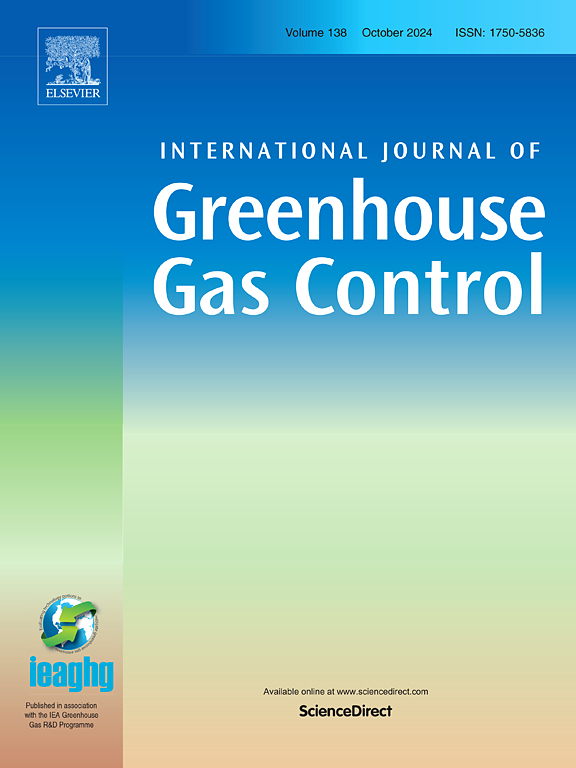利用潮汐监测二氧化碳储存:维多利亚奥特威国际测试中心的实地试验
IF 5.2
3区 工程技术
Q2 ENERGY & FUELS
International Journal of Greenhouse Gas Control
Pub Date : 2025-09-01
DOI:10.1016/j.ijggc.2025.104458
引用次数: 0
摘要
来自太阳、月球和其他天体的潮汐力在固体地球上造成每日变化的应变。这些应变引起流体饱和岩石中压力的变化。它们的振幅和相位受到原位流体的影响,因此,当注入二氧化碳储存地点的含水层时,可以检测到二氧化碳。我们报告了在澳大利亚Otway盆地Paaratte含水层注入15kt CO2羽流周围的六个深观测井对潮汐的全面监测。这个烟柱被用延时地震反复监测。观测井距离CO2羽流的边缘高达500米,但观测到的压力振幅和潮汐的阶段对其产生和传播做出了反应。这种反应发生在距离烟羽的距离上,相当于一天的压力扩散长度,在这种情况下,一天的压力扩散长度约为350米。潮汐可能是一种有用的被动补充方法,可以监测地质储存产生的二氧化碳羽流。本文章由计算机程序翻译,如有差异,请以英文原文为准。
Using earth tides to monitor CO2 storage: Field trials at the Otway International Test Centre, Victoria
Tidal forces from the Sun, Moon and other astronomical bodies cause daily variable strains in the solid earth. These strains cause variations in the pressure in fluid-saturated rocks. Their amplitude and phase are affected by the in-situ fluids, so that CO may be detectable when injected into an aquifer for a CO storage site. We report comprehensive monitoring of earth tides from six deep observation wells surrounding a 15 kt CO plume injected into the Paaratte aquifer in the Otway Basin, Australia. This plume was repeatedly monitored with time-lapse seismic. The observation wells were up to 500 meters from the edge of the CO plume, but the observed pressure amplitudes and phases of the earth tides responded to its creation and propagation. This response is at distances from the plume comparable to the pressure diffusion length in a day, which in this setting is about 350 meters. Earth tides may be a useful passive, supplementary method of monitoring CO plumes created by geological storage.
求助全文
通过发布文献求助,成功后即可免费获取论文全文。
去求助
来源期刊
CiteScore
9.20
自引率
10.30%
发文量
199
审稿时长
4.8 months
期刊介绍:
The International Journal of Greenhouse Gas Control is a peer reviewed journal focusing on scientific and engineering developments in greenhouse gas control through capture and storage at large stationary emitters in the power sector and in other major resource, manufacturing and production industries. The Journal covers all greenhouse gas emissions within the power and industrial sectors, and comprises both technical and non-technical related literature in one volume. Original research, review and comments papers are included.

 求助内容:
求助内容: 应助结果提醒方式:
应助结果提醒方式:


